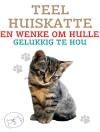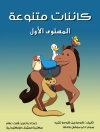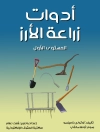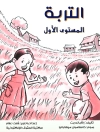In 'Doctor Dolittle’s Post Office, ’ Hugh Lofting continues the enchanting adventures of the beloved veterinarian who can converse with animals. This illustrated edition showcases Lofting’s signature whimsical style, enmeshing readers in a world where anthropomorphic characters share their stories through a charming narrative rife with humor and compassion. As Doctor Dolittle embarks on his mission to establish a postal service for animals, the text weaves themes of communication, community, and empathy, reflecting the author’s progressive ideals during the early 20th century, a time marked by both imperialism and burgeoning environmental awareness. Hugh Lofting, an English author and illustrator, was deeply influenced by his experiences as a soldier during World War I and his subsequent travels. His love for nature and animals, which he cherished as a child, manifest vividly in Dolittle’s character and adventures. The book serves not only as a delightful tale for children but also as a critique of human-centric society, embodying Lofting’s advocacy for understanding and kindness towards all living beings. 'Doctor Dolittle’s Post Office’ is an essential read for anyone who cherishes whimsical storytelling filled with moral undertones. It invites readers of all ages to explore the vibrant world of Doctor Dolittle, encouraging them to perceive the importance of compassion and connection across species, making it a timeless classic.
O autorze
Hugh Lofting (1886-1947) was a British author, primarily noted for his creation of the character Doctor John Dolittle, an animal-loving physician who learns to speak with creatures and embarks on many whimsical adventures. Lofting conceived the idea for his most famous protagonist during the First World War, as a way to write entertaining letters home to his children without exposing them to the horrors of the conflict. His tales of Doctor Dolittle began as a series of children’s books, starting with 'The Story of Doctor Dolittle’ (1920), which established the quirky veterinarian and his incredible animal companions. One of the subsequent novels, 'Doctor Dolittle’s Post Office’ (Illustrated Edition), continues the delightful escapades of Doctor Dolittle and further develops the charming world Lofting imagined. A scholar of both civil engineering and literature, Lofting’s literary style was characterized by a fanciful imagination, gentle humor, and a love for animals that also reflected social commentary of his times. Not merely children’s entertainment, Lofting’s stories often confronted themes of environmental conservation, animal rights, and racism, subjects ahead of his era. Despite the period’s constraints, he artfully wove messages of empathy and understanding into his work, setting the stage for future discussions on these critical issues. Lofting’s contributions to children’s literature have left an indelible mark on the genre, enchanting generations of readers with the peaceable kingdom of Doctor Dolittle and his animal friends.












